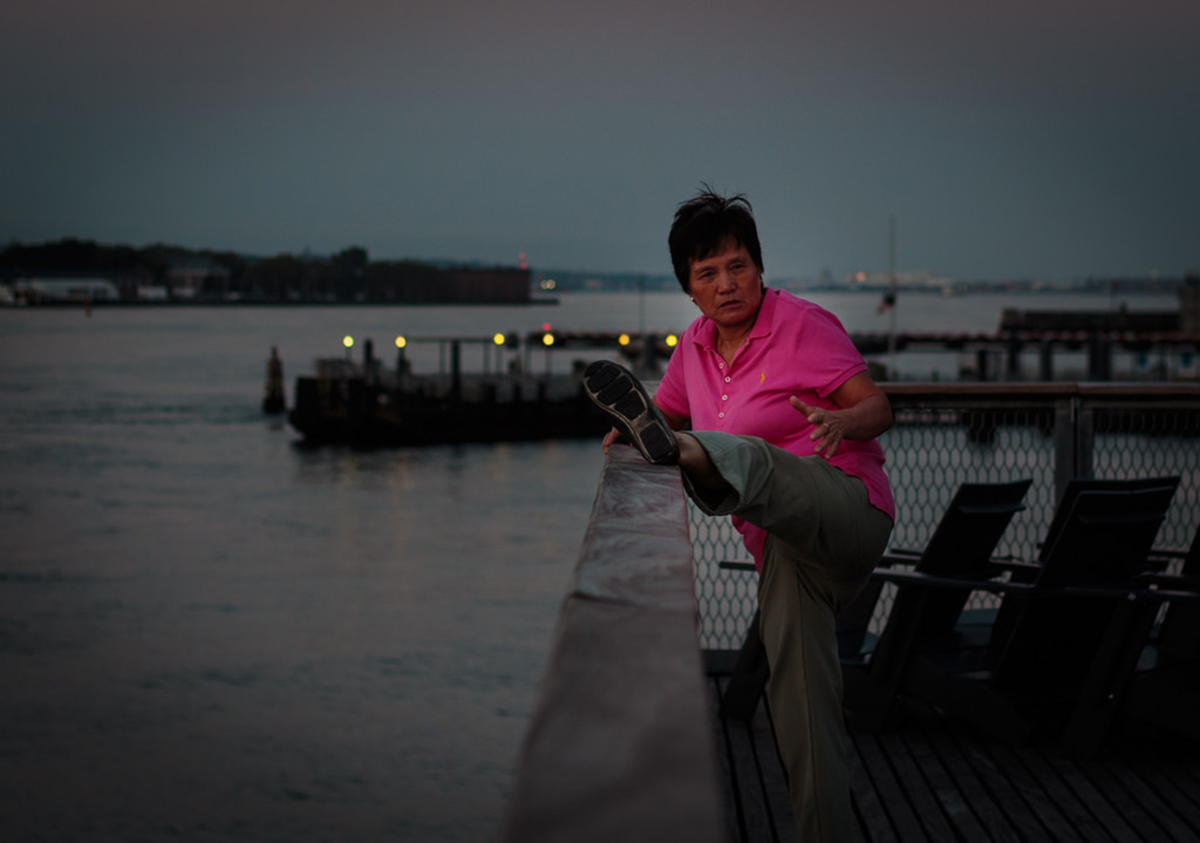Table of Contents
Surprisingly, for a relatively new topic in exercise medicine, this is one area that has been researched quite well despite it’s relatively short time under scientific scrutiny.
In terms of exercise type, everything from flexibility exercises and related disciplines like Yoga, Tai Chi and Pilates have been investigated as well as more dynamic and loaded exercises such as balance training, resistance training and even agility training.

However, in finding the most effective training, research seems to champion balance training, provided that is is sufficiently challenging to the individual. This can include single leg standing, or more advanced drills like stationary superman exercises.
Strength training followed closely behind balance training, which, in turn was followed by stretching and agility training. Endurance exercise such as cycling or walking has also shown to have a positive effect.
However, a combination of balance training and resistance exercise may be the most beneficial as it should help get the best of both world and has shown to be very beneficial in previous research.
As well as the type of exercise done, the amount of it that is carried out is also a significant factor. This was shown in many of the studies which examined the above factors of exercise type, showing that
But, it is worth mentioning that de-training can occur if training ceases for an extended period of time, with a significant loss of benefits occurring within 1 week. So, if sustained benefit is to be maintained training must be continued once it is started.
READ Elderly Who Exercise Regularly Have Better Heart than Healthy Young Sedentary People
Recommendations
So, in closing, any mainstream exercise, but particularly resistance training and balance training, will have a beneficial effect on preventing falls and fall-associated injuries, provided a sufficiently high amount is completed and sustained. With that, below are recommendations for exercise to help prevent falls and injuries in the elderly:
-
Regardless of the activity, increasing exercise will have a beneficial effect on rate of falls, quality of life, mood and daily functioning.
-
Completing 2-3 combined balance and strength sessions per week should provide the best results.
-
Carry out any heavy strength exercises before balance exercises.
-
Ensure balance exercises are adequately challenging.
-
Keep training consistent and regular.
-
Include brisk walking whenever possible as a spare time activity.
- Taking part in activity with a friend or qualified health and fitness professional could improve adherence and results from training.
- 1. Galvao, D. A., & Taaffe, D. R. (2005). Resistance Exercise Dosage in Older Adults: Single‐Versus Multiset Effects on Physical Performance and Body Composition. Journal of the American Geriatrics Society, 53(12), 2090-2097.
- 2. Hauer, K., Rost, B., Rütschle, K., Opitz, H., Specht, N., Bärtsch, P., ... & Schlierf, G. (2001). Exercise training for rehabilitation and secondary prevention of falls in geriatric patients with a history of injurious falls. Journal of the American Geriatrics Society, 49(1), 10-20.
- 3. Latham, N. K., Bennett, D. A., Stretton, C. M., & Anderson, C. S. (2004). Systematic review of progressive resistance strength training in older adults.The Journals of Gerontology Series A: Biological Sciences and Medical Sciences, 59(1), M48-M61.
- 4. Liu‐Ambrose, T., Khan, K. M., Eng, J. J., Janssen, P. A., Lord, S. R., & Mckay, H. A. (2004). Resistance and agility training reduce fall risk in women aged 75 to 85 with low bone mass: A 6‐month randomized, controlled trial. Journal of the American Geriatrics Society, 52(5), 657-665.
- 5. Moreland, J. D., Richardson, J. A., Goldsmith, C. H., & Clase, C. M. (2004). Muscle weakness and falls in older adults: a systematic review and meta‐analysis. Journal of the American Geriatrics Society, 52(7), 1121-1129.
- 6. Orr, R., Raymond, J., & Singh, M. F. (2008). Efficacy of progressive resistance training on balance performance in older adults. Sports Medicine,38(4), 317-343.
- 7. Sherrington, C., Tiedemann, A., Fairhall, N., Close, J. C., & Lord, S. R. (2011). Exercise to prevent falls in older adults: an updated meta-analysis and best practice recommendations. New South Wales public health bulletin,22(4), 78-83.
- 8. Sherrington, C., Whitney, J. C., Lord, S. R., Herbert, R. D., Cumming, R. G., & Close, J. C. (2008). Effective exercise for the prevention of falls: a systematic review and meta‐analysis. Journal of the American Geriatrics Society, 56(12), 2234-2243.
- Photo courtesy of Braiu: www.flickr.com/photos/braiu_74/23260390571/
- Photo courtesy of freepik.com


Your thoughts on this